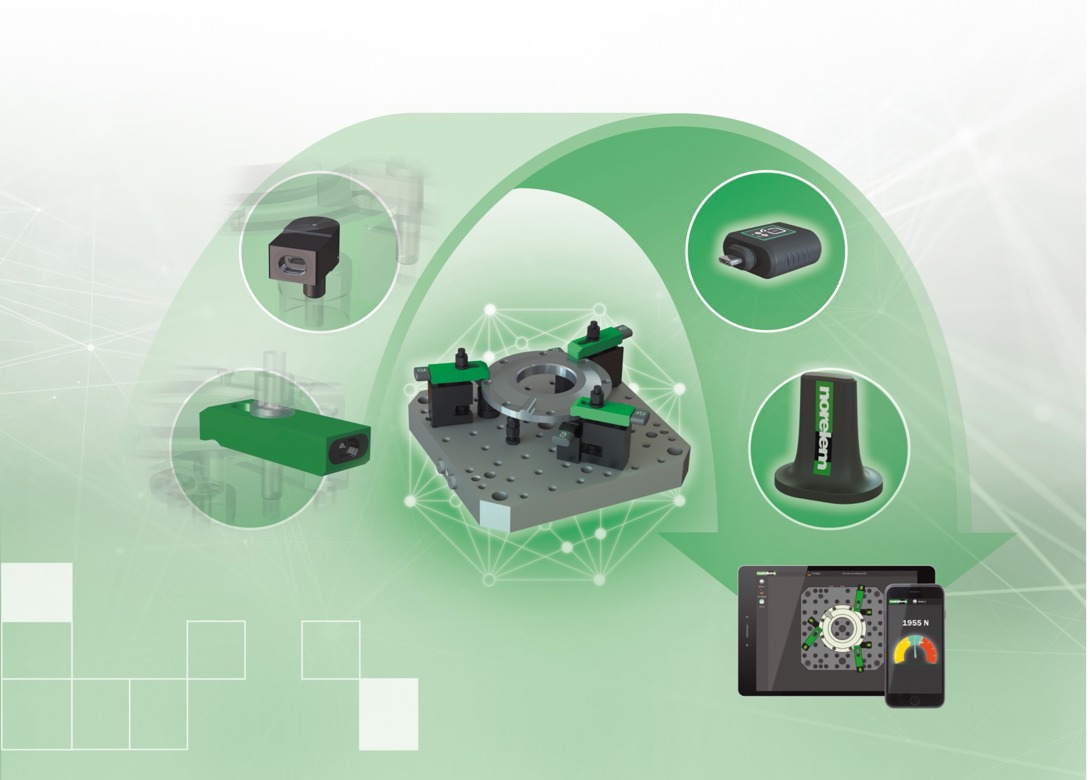
Increasing productivity and efficiency throughout manufacturing has a powerful knock-on effect, decreasing downtime, increasing performance and outputs, and subsequently ensuring a more sustainable approach to manufacturing. To achieve this, even the smallest component of a machine plays a vital part. Here, Marcus Schneck, CEO of norelem, talks about the trends and challenges the industry is facing and how standard components can help future-proof manufacturing through increasing productivity and efficiency.
What trends are there currently in currently impacting customers across the industry?
“Across the industry, many machines currently work digitally, however, in the future, more and more machines will be working ‘smart’. At norelem, we are finalising the launch of our new SMART products, which will continue to drive forward the evolution to smarter, more efficient manufacturing. With the new SMART products, norelem is developing intelligent components and solutions that help to control machining or manufacturing processes in a more stable, precise, and reliable way. We have one simple goal: error-free machining.”
The biggest challenges the manufacturing industries are facing are the raw material situation, the supply chain issues in general, and the huge resulting cost and price increases. At norelem, we put all our efforts in serving our customers quickly and in time, as most of our products are available from stock.
This also means constant optimisation of our global logistics centres and logistics flow. We are aiming to minimise dependency, by increasing in-house production at our production sites both in Germany and in France. And for parts that are not manufactured in-house, we aim for independency by thinking long-term and by taking preventative action. This means tightening our strong relationships with existing suppliers, while at the same time forging trusting bonds with new suppliers and alternative sources.”
What role do standard components play in increasing productivity? Can you give an example?
“Standard parts do not require drawings, drawings can be downloaded as finished models (3D cost free), which means that these corresponding parts are physically available as standardised products from stock. This means that the product can simply be ordered and doesn’t need to be elaborately manufactured, which immediately gives the designer the advantage of plannable availability. There is no drawing, no configuration, just finding and downloading.
Imagine looking for a pin with a diameter of 10mm, length 30mm, M3 hole, out of hardened steel, which costs less than €20 each. The time of a production drawing takes about fifteen minutes. If we estimate that CAD time is charged at an average price of €80 per hour, this will already cost you €20 in process time. At this stage, the part has not been manufactured yet. To do so, or to outsource to a service provider, will likely cost in the region of €50 or above. Overall, you are looking at a cost of €70 or more for a single component.
With norelem’s offering of over 70,000 standard components, the 3D Model is already available free of charge, with a delivery time of one day in Germany. Customers, especially the technical designers, then have more freedom to be focused on core competence, such as developing solutions, instead of creating unnecessary drawings.”
Can standard components also impact efficiency?
“Absolutely. If we look at the entire process from finding the product to delivery, standard components offer clear advantages to increase efficiency. Going back to the example above, the normal process of getting a standard component requires several time and cost intensive steps. From drawing the part to putting the part number on the bill of materials, to handing over the purchasing department who will start the process of requesting quotations, to waiting for the quotations to be received, placing the order and waiting for delivery – the process takes time and time is valuable.
On the other hand, using standard components means engineers simply define the product they need, download the drawing, place the order via our online shop, and receive their component the very next day.
Even for spare parts the benefits are clear. The required goods do not need to be engineered or manufactured again, instead they can simply be reordered. In total, by using standard components, you save time and cost, which leads directly to a higher planning reliability and increased efficiency. The more standardised items are in use, the higher is the positive impact on the whole project.”
What added value does norelem offer to design engineers?
“The answer to this is twofold. For once, through value creation in the form of data. We offer free accessible 3 Data for all our components. Our product catalogue is available both as a print as well as a digital version and is downloadable as an eCatalogue or BME Catalogue.
The second principle of adding value to design engineers is through product development - our focus is always the customer. We do not just develop our product range, we ask ‘What do our customers need? How can we make their lives easier?’ Our product managers are in constant exchange with the market and customers, so that we can ensure that our customers find what they are looking for at norelem. This has enabled us to add more than 10,000 parts to our product range this year. We want to help our customers and design engineers implement their ideas by providing all the parts they need from one single source.”

Becca is the latest member to join our team and is eager to get stuck into the world of fasteners. She brings an enthusiastic and fresh outlook on what we do editorially and will be leading our social media activity – including sourcing material, editing articles and posting online.





